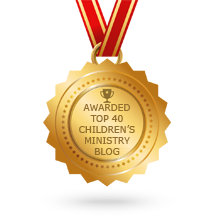
Recently I got a note from a friend of mine who wanted to share some numbers with me. This friend lives is in a typical middle-class neighborhood and teaches at the local public school. I don’t want to cause any problems for her with her job, so I’m not going to post exactly where she lives or the school district where she teachers. This is not considered a low-income district as some might think after seeing these numbers. This could be any school district across the US.
Here is what she sent me:
Out of my pre-K class of 15 children:
- 4 children are from married parents
- 3 children have cohabitating parents (living together but not married)
- 1 child is from a divorced situation
- 7 children come from a parent who has not been married to the other parent of the child and the two parents are no longer together
Let me ask you, if this is what family structures look like in a typical US classroom, shouldn’t this be what family structures look like in a typical children’s church group?
If the reality of these numbers hasn’t sunk in yet, let me put it this way:
Only 4 children out of 15 live in a two-parent family. And we don’t know if these are the original birth parents in a two-parent home or a stepfamily situation.
Research says that the 3 children living with their unmarried parents, or cohabiting parents, will more than likely see a separation of those parents. That could mean by the time these little 4- and 5-year-old children are in second grade, 11 children out of 15 will live a nontraditional family structure and that’s only if the 4 children from married parents are in the original two-parent home.
Those 11 children need the church. They also need a biblical, Christ-centered curriculum that will:
- Help them understand they belong
- Allow them to know they are safe
- Explain that adult problems are adult problems and they have a right to be a kid
- Educate them that the breakup of their family unit it not their fault
- Teach them they are deserving of a heavenly Father’s love and a Savior’s redemptive love
While the majority of the kids in my friend’s class don’t actually come from a divorce situation, they will still experience the same short-term legacies as well as many long-term effects that the child of divorce experiences. They need the local church to reach out to them. They need YOU!
If you don’t have at least 1 in 3 children in your church experiencing a nontraditional family, then you are not extending the love of God to the children in your part of the world. If we don’t reach out, I fear the next generation will tip the scales and the two-parent family will be what the world considers a nontraditional family.
What kind of family structures do you have in your area? Single-parent homes? Cohabiting situations? Grandparents raising the second and even third generations? Blended families? Never-married parents?
Do your church children’s groups truly represent the kids in your community?
What are you going to do to reach the kids in nontraditional families in your neighborhood?
DC4K blogs posts are great to use for training children’s leaders and volunteers and they are free. Subscribe to the DC4K blog here.
Want to learn more about how to start a DivorceCare for Kids group for the hurting children in your community? Click here.
Did you know DC4K blog articles are on Pinterest? Divorce & Kids, Children’s Pastors, Single Parents, etc. It’s all there. Check it out here
Follow Linda on Twitter, dc4klinda









